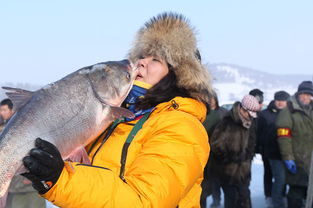本文目录导读:
- Understanding Catfish Behavior
- Choosing the Right Equipment
- Choosing the Right Spot
- The Art of Catfish Fishing
- Diagrams for Catfish Fishing Techniques
- Conclusion
How to Fish for Catfish: Techniques and Diagrams for a Successful Catch
Fishing for catfish can be an incredibly rewarding experience, whether you're a seasoned angler or a beginner looking to try your hand at this fascinating fish. Catfish are known for their resilience, size, and the thrill of the fight they provide. In this article, we'll delve into the essential techniques and provide you with a step-by-step guide, complete with diagrams, to help you become a proficient catfish angler.
Understanding Catfish Behavior
Before we dive into the fishing techniques, it's crucial to understand the behavior of catfish. Catfish are bottom feeders and are often found in slow-moving waters, such as rivers, lakes, and streams. They are nocturnal feeders, so the best time to fish for them is at night or in the early morning. Knowing this can help you choose the right spots and times to cast your line.
Choosing the Right Equipment
Rod and Reel
For catfish fishing, you'll need a sturdy rod and reel. A medium-heavy to heavy-duty rod with a fast-action tip is ideal. This type of rod will help you feel the bite and handle the strong pull of a catfish. A spinning reel is often preferred for catfish fishing due to its ease of use and ability to handle heavy lines.
Line
Use a monofilament line with a breaking strength of 12 to 20 pounds. This line is strong enough to handle the fight of a catfish without being too heavy, which can spook them. Some anglers opt for braided line for its sensitivity and lack of stretch, but it can be more visible to the fish.
Hooks
Catfish have a strong bite, so use a sturdy hook, such as a 1/0 to 3/0 wide-gap hook. This type of hook is designed to handle the force of a catfish's jaw and is less likely to bend or break during the fight.
Lures and Baits
Catfish are opportunistic feeders and will eat a variety of baits. Live bait, such as shad, minnows, or crayfish, can be highly effective. Artificial lures, like jigs or soft plastics, can also be used. The key is to use something that resembles what the catfish would naturally eat in your fishing spot.
Choosing the Right Spot
Catfish are often found around structure, such as logs, stumps, rocks, and bridge pilings. These areas provide cover and attract prey, making them prime spots for catfish. Look for areas with a mix of deep and shallow water, as catfish can be found in both.
The Art of Catfish Fishing
Casting
When casting, make sure to cast your line out as far as possible. Catfish are bottom feeders, so you want to get your bait as close to the bottom as you can. Use a sidearm cast or a roll cast to get your bait into the desired location.
Bait Presentation
Once your bait is in place, let it sit on the bottom for a few moments. This gives the catfish time to detect the scent and approach your bait. If you're using live bait, let it twitch naturally to mimic the movement of a struggling fish.
Waiting for the Bite
Patience is key when fishing for catfish. They can be slow to bite, so be prepared to wait for a few minutes before reeling in. If you feel a gentle tug or a sudden pull, set the hook firmly.
Reeling In
When you feel a bite, reel in slowly and steadily. Catfish can be strong and will put up a fight. Use a combination of reeling and playing to keep the fish from getting free.
Diagrams for Catfish Fishing Techniques
Figure 1: Catfish Rod and Reel Setup [Insert diagram showing the rod, reel, line, and hook setup]
Figure 2: Casting Technique for Catfish [Insert diagram showing the proper casting technique for reaching the desired spot]
Figure 3: Bait Presentation on the Bottom [Insert diagram showing how to position the bait on the bottom and allow it to sit undisturbed]

Figure 4: Reeling In a Catfish [Insert diagram showing the proper technique for reeling in a catfish, emphasizing steady and controlled movements]
Conclusion
Fishing for catfish can be a fulfilling and enjoyable activity with the right techniques and equipment. By understanding catfish behavior, choosing the right gear, and mastering the art of casting, bait presentation, and reeling in, you'll be well on your way to catching these magnificent fish. Remember to practice patience and enjoy the process, as the thrill of the catch is often just as rewarding as the fish itself. Happy fishing!












